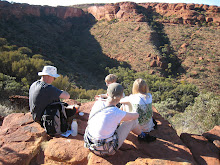


(note; there are two posts added to the blog today)
For the first time in eleven days, we slept in. We had a leisurely breakfast on our balcony facing Neuschwanstein castle. We did a little laundry, cleaned up, and didn’t even get out the door until noon. It was good to slow down a little.
Today was our day to visit the neighboring castles, Hohenschwangau and Neuschwanstein. Neuschwanstein was “mad” king Ludwig’s fantasy castle, built in the late 1800’s and supposedly the model for the Disney castle later in the 1950’s. Hohenschwangau, just down the road, was his boyhood home.
Unlike other, older, regal palaces and castles we have seen, these were actually modest in scale. Hohenschwangau was a “country” castle – a getaway home for the king, and not usually used for entertaining. The rooms had a relatively cozy feel, but heavily ornamented with carvings and painted walls. There was hardly a place on any wall or ceiling that was unadorned. But the overall effect was pleasant. It could well have been a home for a king who enjoyed living there (too many other castles were hardly ever used to their fullest).
Neuschwanstein was very different. It was built not because it was needed or for definable state purpose, but simply on the romantic whim of the teenage king and based on themes from Wagnerian operas. Upon the king’s early death, at age 41 (under suspicious circumstances the day after being committed to a mental institution), construction ended and tourism began. Even with only one third of the interior rooms finished, the castle is a delight to tour. The setting is, indeed, magical and the completed rooms are grandiosely finished. It could be easily said that its construction was a waste of the people’s resources when it was for the king, himself. But as a tourist attraction, it has become a pot of gold for Germany and Bavaria.
Before I close for today, I would like to make a small confession; these blog entries naturally make everything we see and do sound wonderful and make each transition sound like it progresses seamlessly. But that is partly because talking about the rough patches is unpleasant and seems like a waste of space. There are rough patches. There are times when moving from place to place with the children is like herding sheep. There are times when we are so tired we can hardly move. Not every sight is stunning. Not every accommodation is as clean or convenient as we had hoped. A lot of planning went into making things as trouble-free and pleasant as possible. But as I write these entries, I often feel guilty for making things sound more perfect than they really are.
It is a fun, interesting and rewarding experience. I am glad we are here. But for the record, it is not perfect…









































